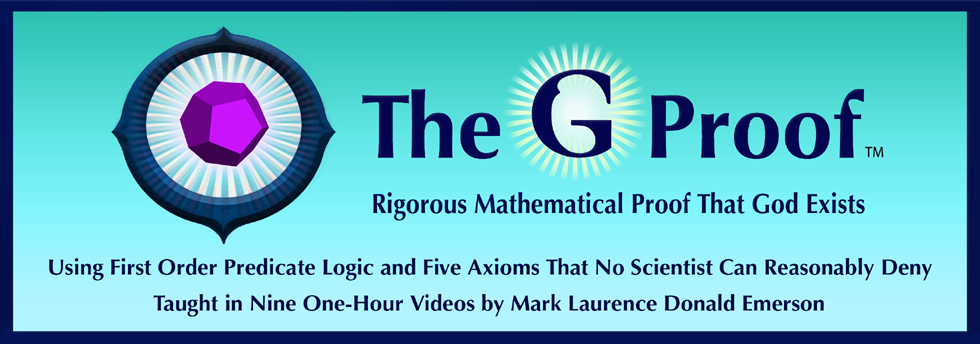Video 3: Crash Course in Sentential Logic
Short Synopsis of Video 3
The first layer of logic is called Sentential Logic, in which the smallest parts considered are whole sentences, such as P, Q and R. Teaches the five main sentential symbols and nine Logic Rules. Presents three proofs. The proofs themselves are in black and white, but as they are explained, line by line, colors are superimposed to show how everything weaves together, and how the rules (which pop up) are being applied. All of the material taught in this Video 3 is necessary for understanding Predicate Logic.

|
Long Synopsis of Video 3
The first layer of logic is called Sentential Logic, in which the smallest parts considered are whole sentences, such as P, Q and R. The next (and most important) layer is called First Order Predicate Logic (taught in Videos Four and Five). But Sentential Logic is a prerequisite — it is a subset of, and is heavily used in Predicate Logic. All of the material taught in this Video 3 is necessary for understanding Predicate Logic.
This Video Three presents five sentential connective symbols that mean: Not (negation), And (conjunction), Or (disjunction), If..Then, aka Implies (conditional), and If And Only If (biconditional). Explains when each is true vs. false. (Not and Or are included for completeness but are not needed in our proof that God exists.) Covers logical equivalence, parentheses, nesting and determining the outermost statement. Then teaches nine Logic Rules and presents three proofs, as follows.
First, Logic Rules 1-4 are presented — Modus Ponens (MP), Repetition (R) which was also used in geometry proofs, Stating a Claim (Claim), and Conditional Proof (CP). Example Logic Proof 1 is presented using these rules.
Second, Logic Rules 5-6 are presented — Simplification (Simp) and Adjunction (Adj). Example Logic Proof 2 is presented using these rules as well as the prior rules.
Finally, Logic Rules 7-9 are presented — Biconditional to Conditional (BC), Conditional to Biconditional (CB), and Direct Proof (DP). Example Logic Proof 3 is presented using these and most of the prior rules.
Each of the nine rules is justified by showing that it preserves truth. As with geometry, logic proofs are done in four columns: Line Number, Statement, From and By. The proofs themselves are in black and white, but, as they are explained, line by line, colors are superimposed to show how everything weaves together, and how the rules (which pop up when needed) are being applied. Proofs are nested within proofs, and a proof (at any level) is completed by writing a "done" line and then "boxing and canceling" (this is a variant of the method developed by Kalish and Montague.)
Errata for Video 3
58:35 — Mr. Emerson says "That's why we're doing in line 2," when he should have said "That's what we're doing in line 9."
59:00 — Mr. Emerson says "I have to try to prove P and R," when he should have said "I have to try to prove P and Q."
